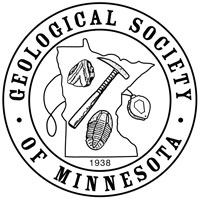Seminar Lab Date:
Seminar Lab presenter:
Seminar Lab presenter 1:
Seminar Lab Subject:
Seminar Lab Location :
A recording of this lecture is available on the Geological Society of Minnesota YouTube channel here: https://www.youtube.com/watch?v=W7Uv3iBvWUQ
Seminar Lab Details:
Summaries:
A Brief Overview of Black Hills Geology
The geologic history of the Black Hills spans over 2.5 billion years, with basin formation and deposition of sediments beginning with the development of the Trans-Hudson Orogen. After a period of non-deposition and erosion now known as the Great Unconformity, Phanerozoic sediments began to be deposited in the area, with deposition being influenced by the adjacent Williston and Powder River basins. The Late Cretaceous Laramide Orogeny uplifted western South Dakota, forming the Black Hills as the most eastern extent of the Rocky Mountains. Igneous intrusive activity also accompanied the uplift, and lasted until the middle of the Tertiary Period. Volcanic ash blown into western South Dakota from the west also covered much of the northern Central Plains. Minor episodes of uplift and continued erosion has uncovered the extensive rock record of the Black Hills, producing the topography and rock exposures that we enjoy seeing today.
Gold and the Black Hills
Discovered in 1874, Gold in the Black Hills of South Dakota was found during the Custer Expedition by Horatio Ross while panning along French Creek, east of present-day Custer City. Placer mining is what started the Black Hills Gold Rush of 1876 in the town of Deadwood and as exploration continued small hard rocks mines were discovered. This eventually led to the greatest discovery at the Homestake mine and to today’s only running gold mine, the Wharf mine. Gold still can be found today in the form of placers, paleo placers, vein, and disseminated deposits. Although they are no longer commercially viable, a geologist can still look for and find these deposits today and relive the history of gold discovery in the Black Hills.
Biographies:
Mark Fahrenbach received a Bachelor’s of Science degree in geology from Michigan State University, East Lansing. Michigan (go Spartans!), and a doctorate in geology from the South Dakota School of Mines and Technology, Rapid City, South Dakota. He has worked for the South Dakota Department of Agriculture and Natural Resources, Geological Survey Program for over twenty five years, mainly performing geologic mapping of the Black Hills.
Brian Fagnan is a certified professional geologist who has worked for the Department of Agriculture and Natural Resources, Geological Survey Program for the past 20 years. He holds a Master’s Degree in Geology/Geological Engineering from the South Dakota School of Mines and Technology and Bachelor’s Degrees in Geology and Audio Communications from the State University of New York College at Fredonia.
